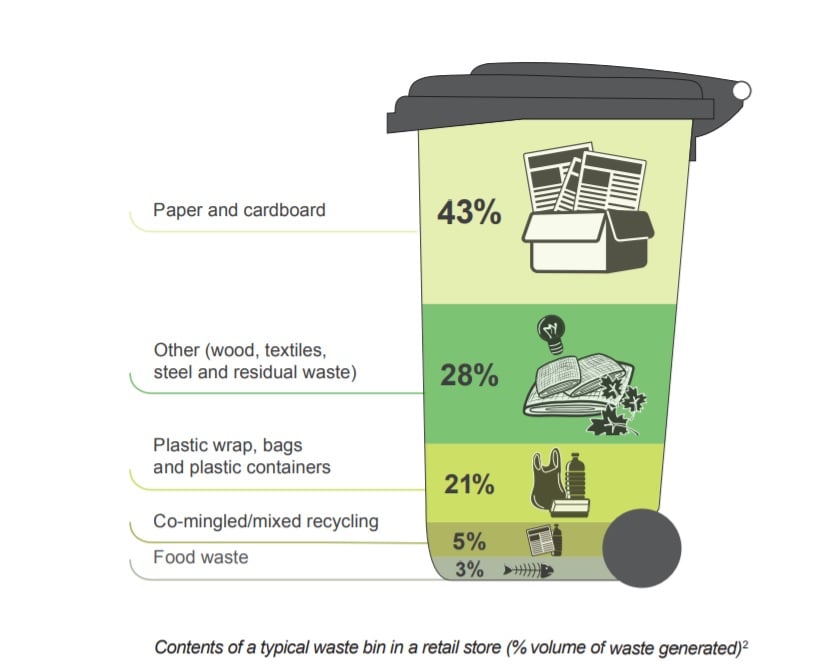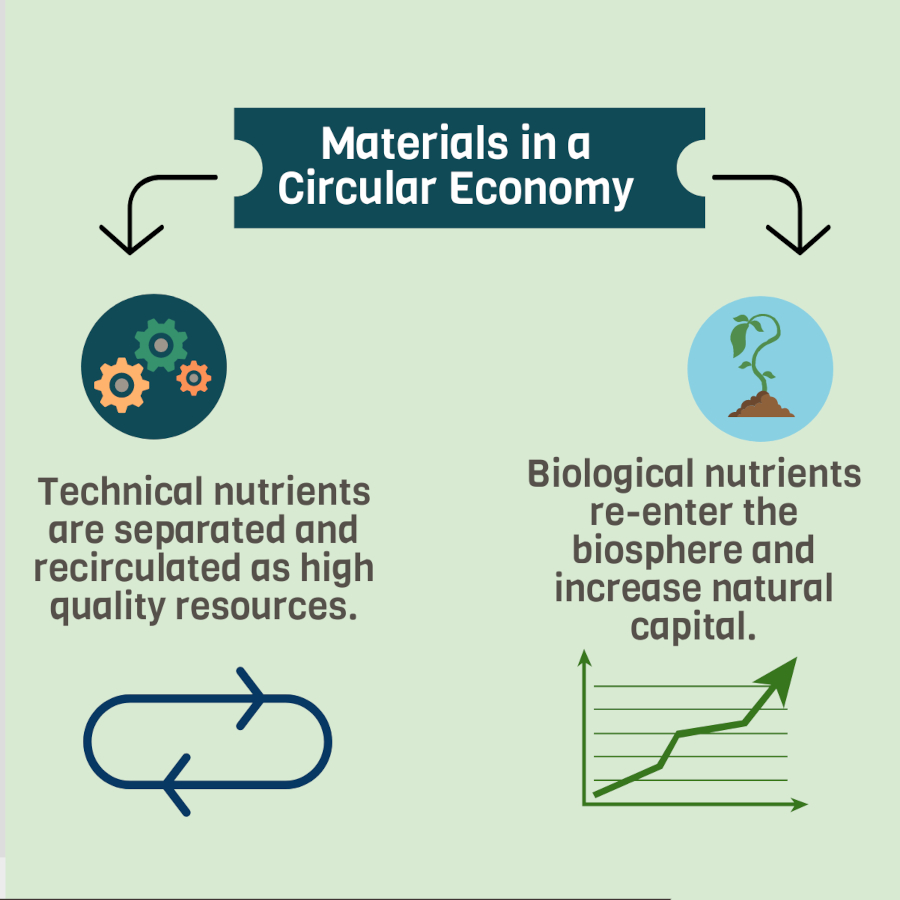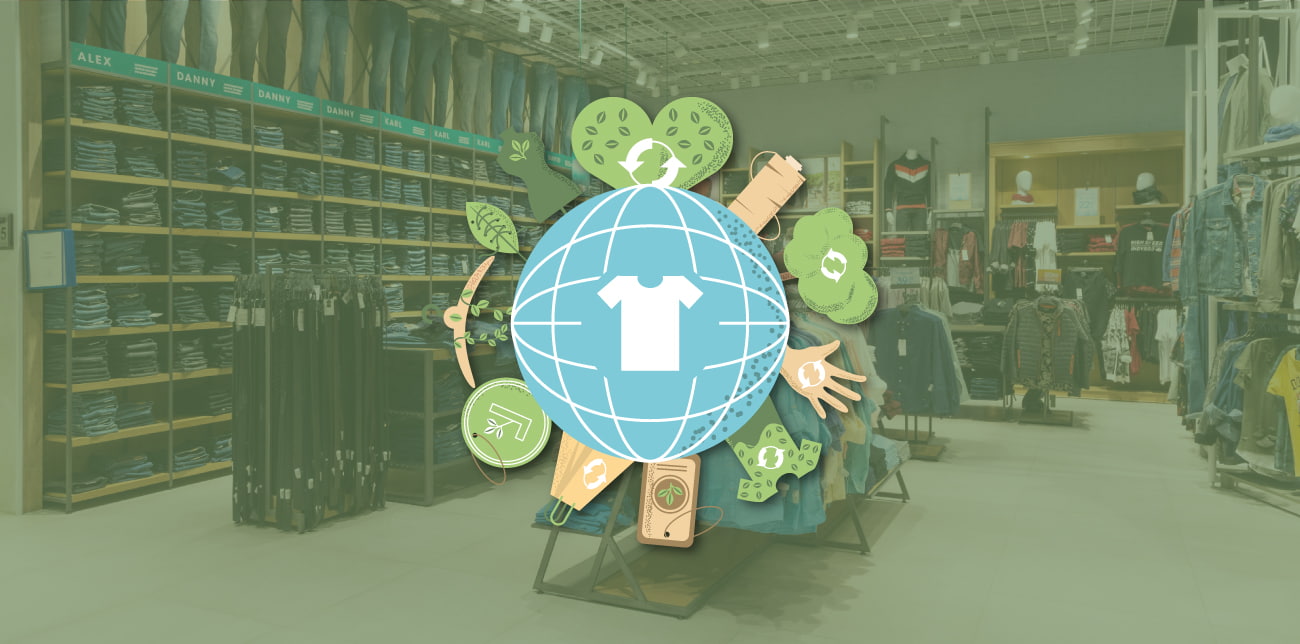In every phase, from manufacturing to shipping and even product disposal, the majority of retail processes exert negative impacts on the environment. It’s clear to retailers that the prevailing business model isn’t sustainable for the long haul. Furthermore, consumers are increasingly advocating for more environmentally-conscious practices. In fact, 72% of global consumers are willing to pay more for sustainable products (Arbor), underscoring the growing demand for responsible commerce. Corroborating this shift, a recent Deloitte report states that “61% of CxOs believe climate change will have a significant impact on their organization’s strategy and operations within the next three years.” In response, both burgeoning small businesses and established global brands are pioneering the evolution of sustainable retail. This article provides a comprehensive overview of sustainable retail, delving into its challenges, emerging trends, and exemplary practices, all designed to facilitate your company’s alignment with this imperative shift.
The need for sustainable retail
Not only are consumers interested in sustainability, but lawmakers also recognize the need to reduce retail’s impact. Many countries are enacting regulations aimed at curbing common practices that affect the environment.
Under emerging regulations, retailers will face compliance issues related to hazardous waste, solid waste, chemicals commonly used in products, and even the use of refrigerants. To have a sustainable grocery store, for example, a retailer may need to switch out much of its existing refrigeration for a more sustainable option that doesn’t compromise food safety.
This problem is not just on retailers, though. Many consumer shopping habits are also unsustainable. The rise of fast fashion in the early 21st century has led to a global epidemic of waste. An estimated 92 million tons of textiles end up in landfills every year, partially due to customers who only wear an article of clothing once or twice before throwing it away.
Sustainable retail offers solutions to these concerns as brands implement more eco-friendly practices and help to educate and encourage shoppers to change their buying habits.
What is retail sustainability?
Retail sustainability encompasses a comprehensive suite of strategic approaches, best practices, and forward-thinking initiatives geared towards responsible stewardship of environmental, socio-economic, and corporate responsibilities.
The sustainable shopping definition
Sustainable shopping allows shoppers to make purchasing decisions that are less impactful on the environment and that promote ethical practices. Conscientious shoppers can use sustainable shopping apps to find retailers that work with reputable and ethical manufacturers.
Eco-friendly practices for sustainable retail
With more than half of U.S. consumers expressing an interest in sustainable retail, brands should start shifting to eco-friendly practices as soon as possible. These are some ways that forward-thinking retailers have started to reduce their carbon footprint:
Eco-friendly practice #1: Energy efficiency and renewable energy

Retailers can look into using renewable energy, such as solar or wind energy, to power their operations. They can also use more eco-friendly HVAC systems to reduce energy consumption in their offices and retail locations.
Brands interested in opening new stores can find locations designed to maximize the use of natural light, allowing them to use less energy during the day. They can also swap out traditional lightbulbs with more energy-efficient models.
Eco-friendly practice #2: Waste reduction and recycling

Retailers can use less packaging and more post-consumer recycled materials. To encourage customers to recycle, some retailers accept old and worn products that they can then repair or repurpose and resell. They may offer rewards or discounts to help incentivize customers to return old items.

Eco-friendly practice #3: Sustainable packaging and materials

Instead of shipping small products in large boxes loaded with plastic bubble wrap, a retailer can reduce waste by using a smaller box with biodegradable packing materials.
Eco-friendly practice #4: Ethical sourcing and fair trade

Retailers can source products and materials from suppliers that offer fair compensation to producers and humane working conditions to their employees. Committing to fair trade practices helps improve social and environmental standards in developing countries.
Eco-friendly practice #5: Green store design and construction

Most retailers look for spaces that fit their desired location and price point. With the rise of sustainable shopping centers, it’s now easier to find a greener location.
Along with eco-friendly lighting and ventilation systems, retailers can use sustainable materials when constructing product displays, shelving, and other in-store features. They can also use low-VOC (volatile organic compounds) paint, flooring, and materials to improve air quality.
The sustainable retail guide checklist
Here are steps any retailer can take to incorporate more sustainable practices into their business model.
1) Supplier engagement and auditing

Customers can use apps to find the best sustainable shopping brands in their area. Partnering with an unethical or excessively wasteful supplier for manufacturing, shipping, or other parts of the supply chain can undermine a brand’s own efforts to become sustainable.
Before partnering with any vendor, retailers should audit the company and continue to engage with them to ensure that their sustainable commitments align with the brand’s own values.
2) Transportation and logistics optimization
Shipping items by sea accounts for 3% of all greenhouse gas emissions. Sustainable retail includes optimizing storage and shipping to cut down on these and other vehicle emissions. Brands that want to become more sustainable should look for warehouses closer to their customers or look into pop-up warehouses for temporary storage.
With an efficient delivery and shipping plan, retailers can reduce the number of touchpoints needed to deliver a product to a customer, lowering their emissions.
3) Consumer education and engagement
For sustainability efforts to be effective, customers need to be on board. For example, sustainable stores in NYC and other major cities have added a fee for plastic bags, encouraging their customers to bring their own sustainable shopping bags.
Customers may also be unaware of how their purchases impact the planet. Retailers such as Pact highlight their commitment to sustainability prominently in their marketing, allowing customers to learn more about how their purchase affects the environment.
4) Circular economy strategies

Circular economy strategies aim to reduce waste by encouraging customers to use a product for as long as possible and then resell, repurpose, or recycle it. Retailers such as Best Buy and Amazon regularly communicate to shoppers the possibility to buy refurbished electronics at a reduced price.
Most cell phone providers offer cashback or store credit for older phones that are still in good condition. Sustainable furniture stores employ the same strategy, either reselling old products or breaking them down and using the material to make new merchandise.
5) Collaborating with sustainability partners
Any brand that wants to become a sustainable retailer doesn’t have to do it alone. Partnering with consultants for a sustainability audit can help them green their operations at every step. Brands operating physical stores can also partner with sustainable shopping centers to find locations that allow them to reduce their carbon footprint.
Challenges and solutions for sustainable retailers
Many retailers find themselves facing an uphill battle in an effort to become greener. Fortunately, there are several ways to manage these common challenges — one step at a time.
Challenge #1: Consumer demand and education
Although shoppers indicate a desire for more sustainable stores in Los Angeles and other large cities, they may not be willing to change their behavior. Simply put, many sustainable options often cost more. Retailers committed to sustainability need to do more to educate customers about the impact of their purchasing decisions.
The solution
A retailer can start to educate customers via their website and by including information directly on their product labels. Customers should be able to easily seek out a company’s sustainability policies and the initiatives they are taking to achieve these goals. Optimizing local search results will also help a brand’s visibility when searching phrases like “sustainable stores near me.”
Challenge #2: Cost and ROI considerations
For retailers, committing to sustainability can appear to be a costly endeavor. Sustainable materials, fabrics, and other manufacturing components are often more expensive than their traditional counterparts. For example, certified organic cotton is 20-30% more expensive. These expenses can add up, impacting profit margins.
The solution
Committing to sustainability may be less expensive in the long run. While a retailer will need to shoulder upfront costs to change materials, suppliers, and sometimes even office or retail locations, these costs even out over time. Businesses located in high-efficiency buildings save an average of $0.60 per square foot in annual operating costs. Partnering with local suppliers can also save a business money on supply chain costs.
Challenge #3: Supply chain complexity
Supply chain management is already complex, and keeping it sustainable can be intimidating. With up to 90% of a company’s greenhouse gas emissions coming from its supply chain, it is critical to find a better way to manage this part of business operations.
The solution
To make their supply chain more eco-friendly, sustainable shops should diversify their vendor pool. Partnering with multiple vendors protects the retailer from downtime due to natural disasters and other factors beyond their control.
Adopting resale tactics for sustainable retail
Cultivating a circular economy is one of the most effective ways to take action against waste and lower a brand’s carbon footprint. Increasing resale practices and other circular business models by 1% could reduce greenhouse gases by 13 million tons.
Benefits of resale for brands

Along with being more sustainable, resale options give retailers more control over their brand on the second-hand market. Counterfeiting runs rampant on resale sites with an average of 1 in 4 products being fake. When a brand resells its own products, consumers can trust that they’re getting authentic goods. Resale also offers retailers additional revenue that may counteract some of the costs of going green.
Creating a resale strategy
Before jumping in and offering to buy back and resale old items, retailers should do research to see if people are already reselling their products online. Once they get an idea of the demand, they can decide whether to work directly with customers, operate their own resale platform, offer a buy-back program, or work with a partner to consign used merchandise. Each model has its challenges and benefits, and a retailer’s best option varies based on their products and their consumer base.
They can also consider partnering with a sustainable fabric store that may be interested in repurposing old clothing.
Collaboration with resale platforms
If a sustainable retailer decides that partnering with a third party is the best resale strategy, they should look for one with a good reputation and a similar product mix. Multiple retailers have partnered with brands like thredUP to offer customers incentives to resell their old merchandise. For example, The Container Store promoted its partnership with a special event that offered customers a gift card to the store if they sold their old products through thredUP.
Establishing a green supply chain in retail
One of the best ways for a brand to make itself more sustainable is through a greener supply chain.
Ethical sourcing and transparency
A retailer should investigate how their suppliers and vendors treat their workers. They should steer clear of working with companies in countries with a reputation for human rights violations and interview each supplier with regard to labor and environmental practices.
Suppliers who promote sustainability
Retailers also need to commit to finding partners at every step of the supply chain who share their green philosophy, thoroughly vetting each of them.
Supply chain optimization
Optimizing the supply chain is not only greener, but it can also be financially beneficial. To start, retailers need to look at their current operations, including inventory management, transportation costs, vendor relationships, and operational practices. Next, they need to forecast demand and organize their supply chain in a way that reduces cost and waste.
For example, switching to an AI-operated inventory management system can help reduce the amount of unsold inventory sitting in a warehouse, thus reducing solid waste.
Using technology for sustainability
Technology is not limited to supply chains and operations. Retailers can use it for multiple green goals and initiatives.
Data analytics for sustainability insights
Sustainable stores in London, New York, and other major cities can establish a baseline and use inventory management systems and other technology to measure their progress with metrics such as:
- Energy consumption at every facility, from the warehouse to the store itself
- Water usage
- Air quality within retail locations
- Consumption of non-reusable materials
- Consumption of recyclable materials
- Inventory levels
Automation and energy management systems
AI-based energy management systems automate in-store lighting, temperature, and other utilities based on time of day, customer count, and other factors. Automated inventory and manufacturing processes also help reduce waste by making processes more efficient.
Obliging to sustainability regulations
Consumers aren’t the only ones encouraging retailers to go green. Many governmental agencies across the globe are also enacting regulations to curb exploitative practices and retail’s impact on the environment.
International standards and certifications
Retailers that choose to commit to sustainability will likely have to issue detailed reports on their environmental and sustainability data. They should become familiar with reporting standards to make sure they are disclosing the right information to customers.
Governmental policies and incentives
Governments across the globe are encouraging retailers to go green, offering tax incentives and other rewards for businesses that cut pollution and make a commitment to eco-friendly practices. When opening locations in different countries, sustainable retail brands should look into local regulations and take advantage of incentives.
Collaboration and industry initiatives
As more retailers begin to adopt sustainable practices, they can influence one another. Collaborating on councils and at conferences will help make it easier for other retailers to make their operations more eco-friendly. Retailers can take advantage of other brands’ successes, implementing lessons learned and tackling more challenging parts of the process.
Interesting trends and statistics about sustainable retail
Sustainable retail is on the rise. Here are some interesting stats and trends about how this sector of the industry is growing, from sustainable gift shops to greenhouse retail:
Sustainable retail statistics
- Sustainable products made up 32% of industry growth in 2022 (The Round Up).
- Roughly 55% of consumers will pay more for eco-friendly brands (The Round Up).
- Around 24% of shoppers think it’s essential that products are free of harmful or synthetic materials (Insider Intelligence).
- Approximately 87% of Americans say they want to shop with retailers who have sustainability certifications (National Retail Federation).
The latest sustainable retail trends
- Although customers are interested in sustainable shopping habits, many are not familiar with critical terms such as “circular economy” (National Retail Federation).
- Consumers are buying fewer products packaged in plastic (Adecco USA).
- Customers are making efforts to buy locally sourced products (Adecco USA).
Discover more insightful Sustainability reports and resources
- Deloitte 2023 CxO Sustainability Report
- Internet Retailing Sustainability Report 2022
- Retail Innovation: 11 Retailers That Nailed It
- Future Retail in 2035: All the Retail Insights You Should Know
Letting your customer know: Send CSR Email Campaigns
While implementing CSR and sustainability best practices is essential, effectively conveying your company’s eco-conscious culture and initiatives to customers is equally crucial. This not only bolsters customer retention but also enhances brand preference. To achieve this, a marketing automation platform with robust segmentation capabilities is indispensable, ensuring precise retargeting of this customer segment for future endeavors.
Example of a CSR email campaign:

Bonus Tip: Last but not least, don’t overlook issuing a press release. It can generate significant positive coverage for your brand.
Conclusion: Paving the path to a sustainable future in retail
More and more customers are interested in brands that are committed to sustainability. Retailers who fail to adopt at least some measures toward eco-friendly practices risk losing customers — as well as their business altogether — if they fail to follow regulations. Although the process of adopting eco-friendly practices can feel daunting and pricey, retailers can tackle it in steps, making small changes in their physical locations and then moving on to different parts of their supply chain.
Retailers also need to learn how to communicate their sustainability practices to consumers and encourage them to reduce their own impact. Putting together marketing campaigns can help with this education and outreach.
As your company embarks on its sustainability journey, ContactPigeon, recognized as one of Europe’s premier omnichannel customer engagement platforms by G2, stands as an invaluable partner.
Contact us to discuss how we can drive growth through your CSR strategy for your retail brand.

Let’s Help You Scale Up





